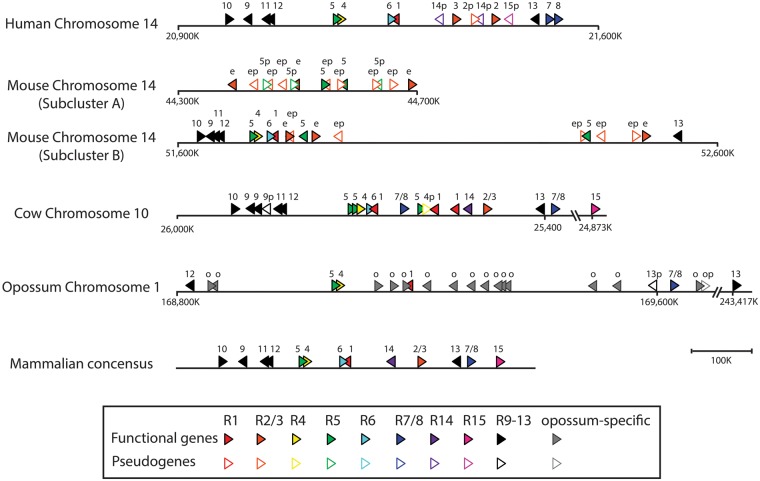Fig. 1.—
Chromosomal maps of all RNase genes identified in the human, the mouse, the cow, and the opossum. Gene locations are drawn to scale. Arrowheads indicate transcription directions. Filled arrowheads represent functional genes and open arrowheads symbolize pseudogenes. The mammalian consensus map shows the general pattern of gene order and direction of the 13 ancient RNase gene lineages as shown in supplementary table S2, Supplementary Material online. Different colors were used to represent different gene lineages: red for RNase1, orange for RNase2/3, yellow for RNase4, green for RNase5, light blue for RNase6, dark blue for RNase7/8, purple for RNase14, magenta for RNase15, and black for RNases9–13. Numbers above the arrowhead symbols indicate the gene lineage (e.g., “4” for RNase4). Gray arrowheads represent the opossum-specific genes that are not found in any eutherian mammals, and these genes were labeled with “o” above the gray arrowhead symbols. The mouse EARs are labeled with an “e” above the arrowhead. Pseudogenes are denoted by a “p.”

